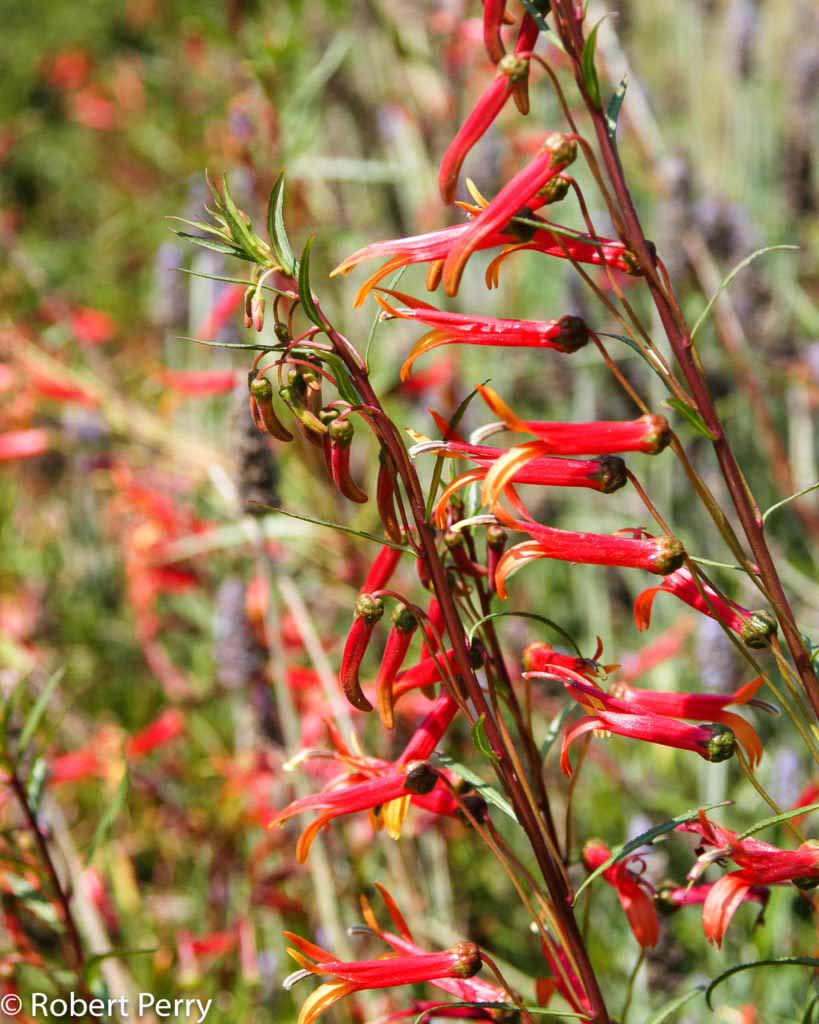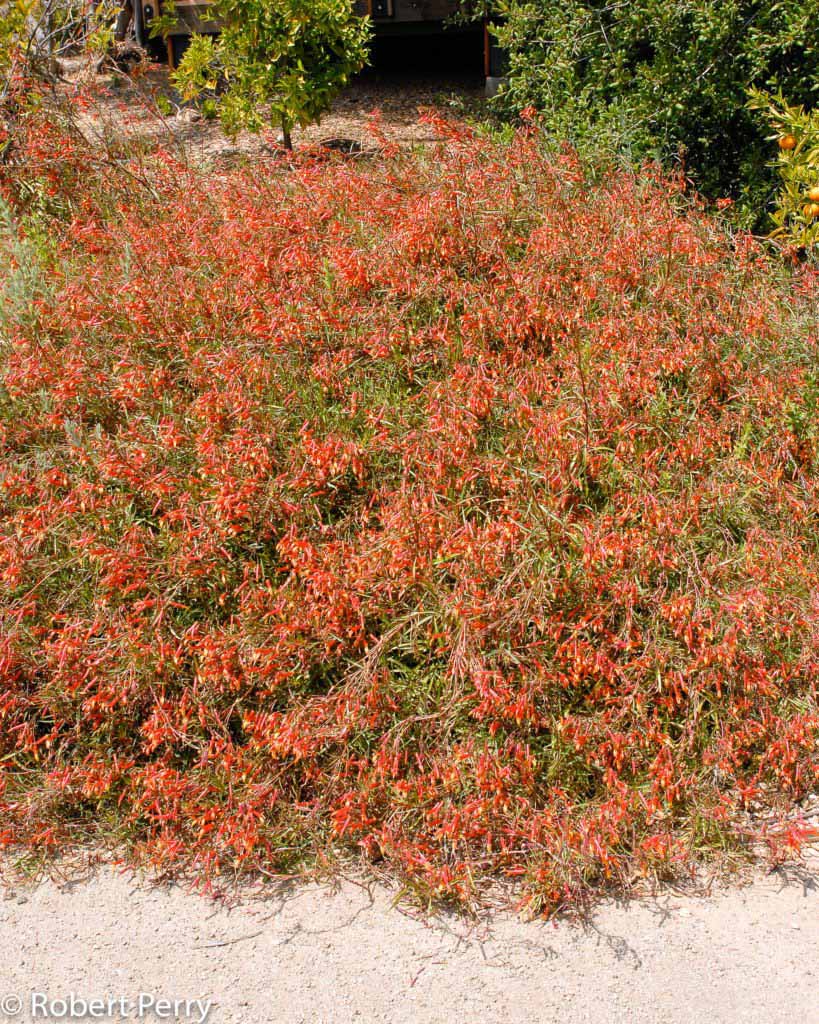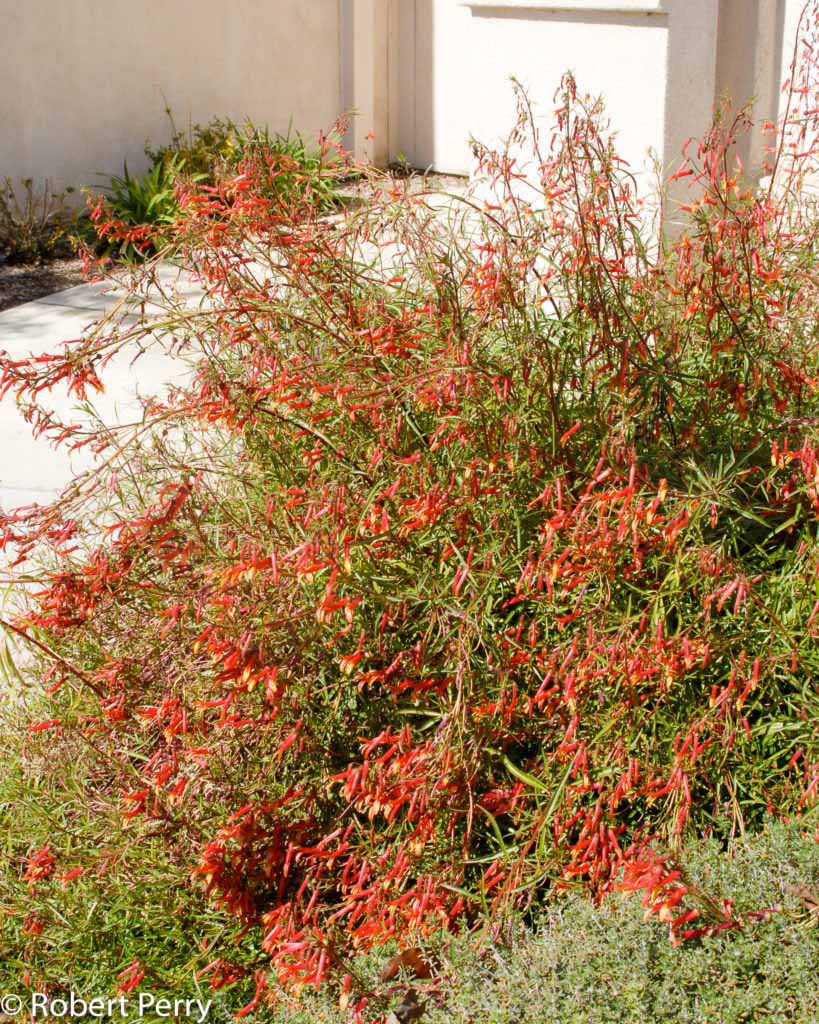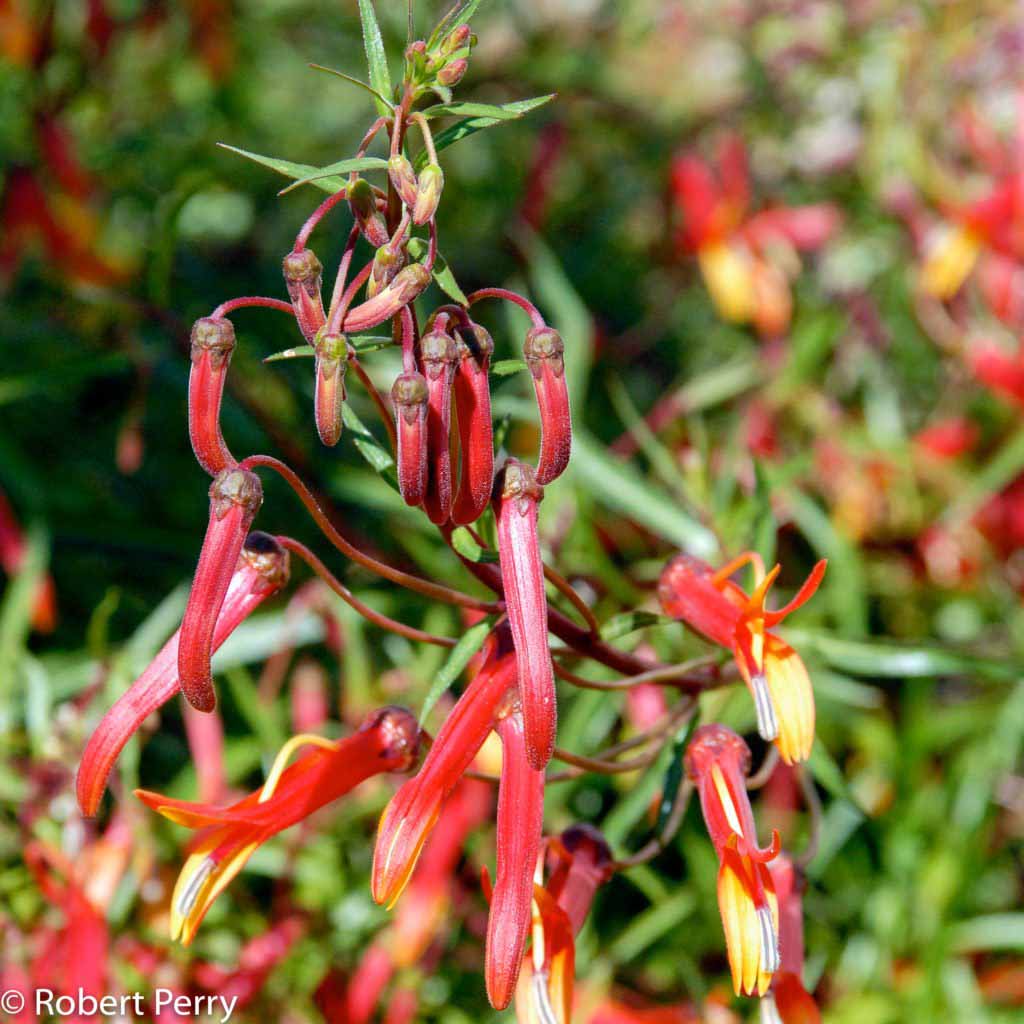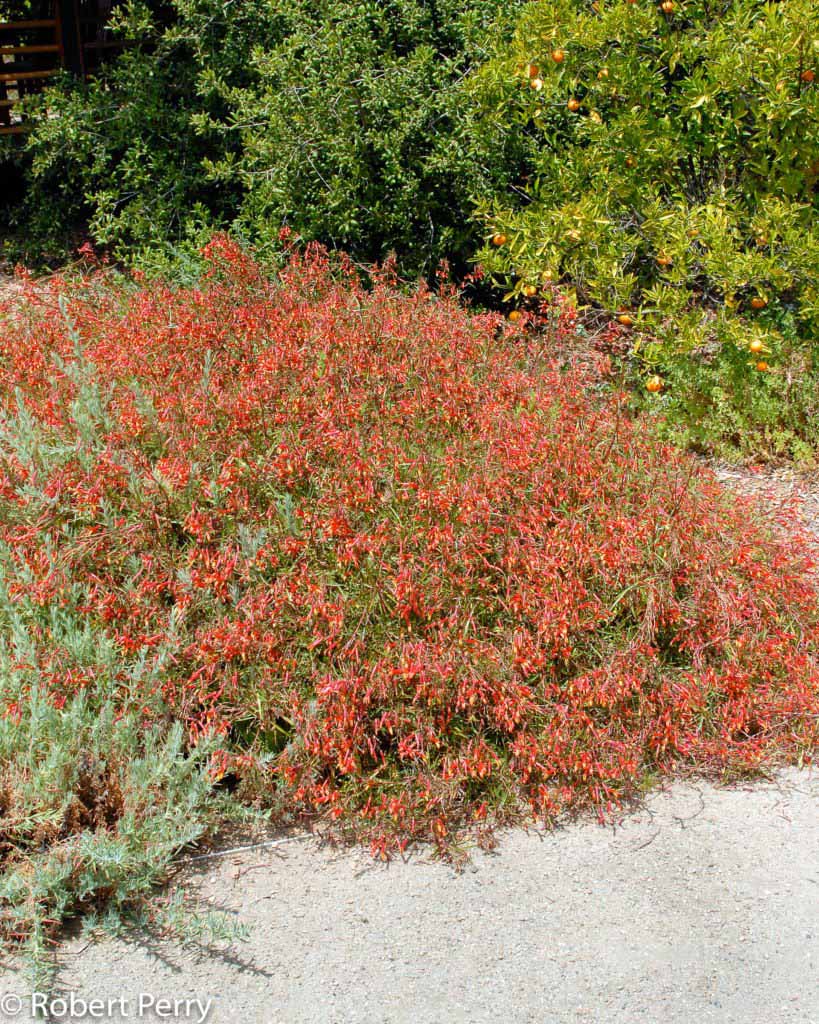Mexican bush lobelia is a sprawling perennial with a fast growth rate, reaching 2-3 ft. high, spreading 4-6 ft. across. Medium green leaves are long, narrow and attached to lax stems. Colorful tubular flowers are orange and red with yellow tips, and occur in large numbers from late spring through summer.
Mexican bush lobelia is native to warm and dry regions throughout southern Arizona, Mexico and Central America. It grows in areas of partial shade around rocks and along washes where seasonal moisture concentrates. This species can be easily grown throughout the Inland Empire where it does best in sunny locations, on well-drained soils and with deep watering during the summer.
This is a very colorful and carefree perennial that provides bright flower value in water conservation gardens and in combination with southwestern style plants. It is very attractive to hummingbirds. Trim plants hard after the flowering season to maintain smaller sizes and to help renew growth.
